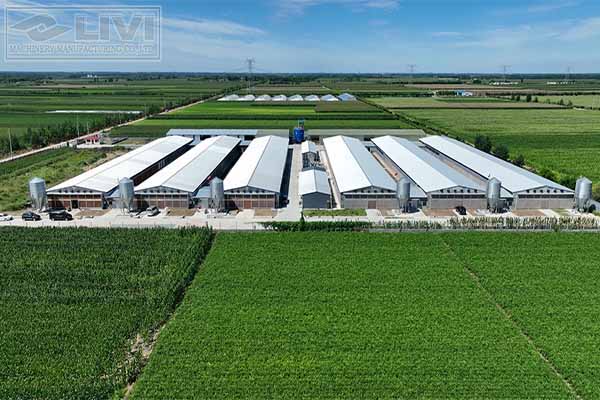Optimizing Egg Cage Systems in Warm Climates for Intensive Chicken Farming
Introduction
In the poultry farming industry, maintaining an efficient and cost-effective environment is crucial. Warm climates present unique challenges, especially for egg cage systems, which require careful design to ensure the health and productivity of chickens. This article explores the optimization of intensive egg cage systems in warm climates, providing insights for farm owners and investors.
Challenges in Warm Climates
Warm climates can lead to increased heat stress, decreased egg production, and higher mortality rates in chickens. To mitigate these issues, several factors must be considered when designing an egg cage system.
- Temperature Regulation: The ideal temperature range for chickens is between 70-75°F (21-24°C). Egg cages should be designed to provide shade, natural ventilation, or mechanical cooling systems to maintain this temperature range.
- Air Circulation: Proper air circulation is essential to prevent the buildup of heat and humidity. The design of the egg cages should allow for unobstructed air flow.
- Material Selection: Using materials that do not absorb heat and have high thermal resistance can help in reducing the overall temperature within the cage.
Design Considerations
To optimize egg cage systems in warm climates, the following design elements should be integrated:
Shading and Reflective Surfaces
Reflective materials and shading can significantly reduce the temperature inside the egg cages. Consider the following:
–
- Painting the interior white to reflect sunlight.
- Using shade cloths to block direct sunlight.
Natural and Mechanical Ventilation
Ventilation systems should be designed to promote air flow and dissipate heat. This can be achieved through:
–
- Strategically placed vents and fans.
- Using automatic opening and closing vents that respond to temperature changes.
Humidity Control
Maintaining appropriate humidity levels is crucial. Consider:
–
- Installing dehumidifiers to remove excess moisture from the air.
- Using water-spraying systems to reduce air temperature and humidity levels.
Case Study: Success Stories
Several farms have successfully implemented these strategies. For instance, Farm ABC reported a 10% increase in egg production and a 15% reduction in mortality rates after implementing an intensive egg cage system optimized for warm climates.
Conclusion
Optimizing egg cage systems in warm climates requires a comprehensive approach that includes temperature regulation, air circulation, material selection, and effective shading. By integrating these design considerations, poultry farmers can enhance the productivity and health of their chickens, leading to a more sustainable and profitable operation.
Contact Us
For a free chicken farm design plan and equipment quotation from LIVI Mechanical, please leave a comment below or contact us directly. We’re here to help you elevate your poultry farming operation.





